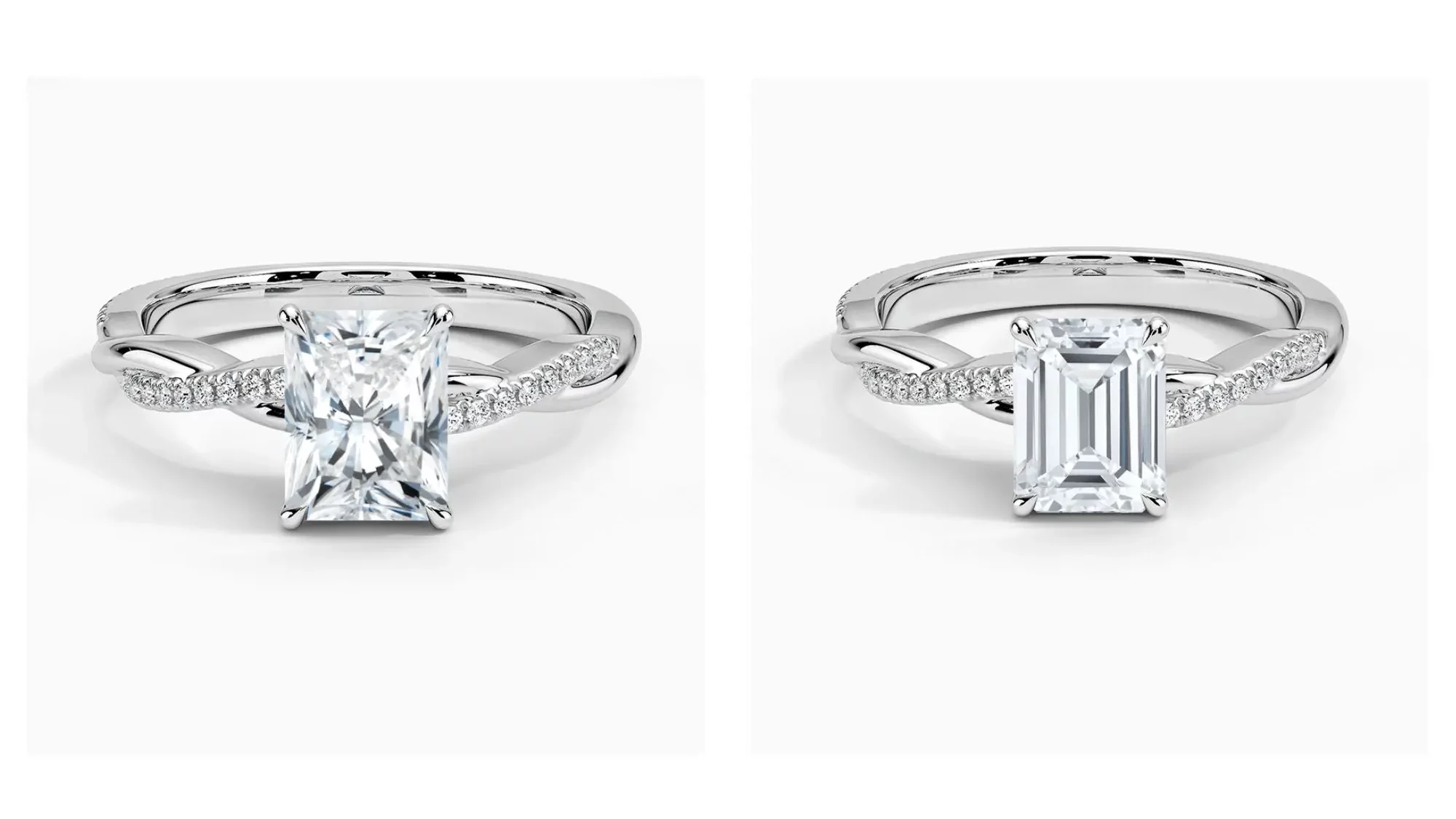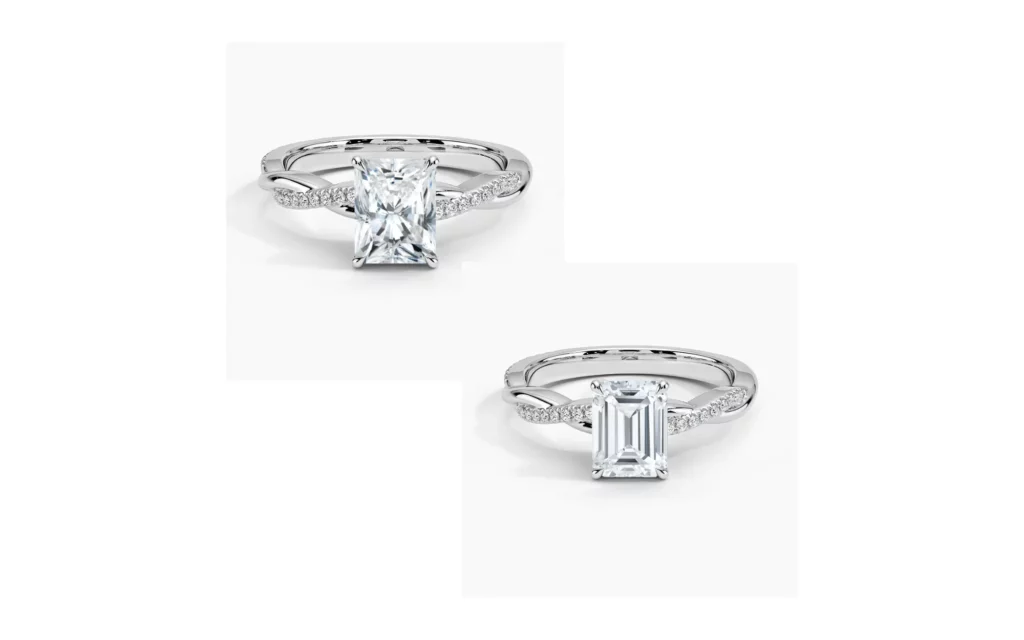If you’re looking for a rectangular diamond shape that’s a little less traditional and will show off your beautiful stone, a radiant cut or an emerald cut is never a bad choice.
These stunning cuts look similar at first glance but do have their own histories and characteristics that make them quite different.
If you want to learn more about the differences between these diamond cuts, read our breakdown on radiant cut vs emerald cut diamonds!
Radiant Cut vs Emerald Cut Diamonds

History
Radiant Cut
The radiant cut was invented in 1977 in New York by diamond cutter, Henry Grossbard.
Grossbard wanted to create a cut that fused a square shape with the brilliance of popular modern round cuts. Thus, the radiant cut was born.
Emerald Cut
The emerald cut has a much richer history and is one of the oldest diamond shapes, dating back as far as the 1500s.
As the name suggests, the cut was originally used for emeralds, but became more popular during the Art Deco era (1920s and 1930s) thanks to its clean lines and refined look.
Facets
Radiant Cut
Facets refer to the flat surfaces of a stone that are arranged in a geometrical pattern.
The facets of a diamond affect the pattern of reflections when the stone interacts with the light, creating optical illusions and adding additional sparkle.
Acting like prisms, the facets bounce the lights through the stone to create a wonderful glint.
In terms of the radiant cut, Grossard created a whopping 70 facets for this hybrid stone shape, making it one of the most faceted diamond cuts available.
These facets are either triangle-shaped or kite-shaped and radiate from the center to really emphasize the brilliance of the stone.
The radiant cut is rectangular, sometimes square, with cut-corners — also similar to the princess cut.
Emerald Cut
On the other hand, an emerald-cut diamond has around 50 to 58 facets (depending on the dimensions of the stone) that are more parallel with each other.
The cleaner lines of the emerald cut allow for a more subtle and sophisticated sparkle that can be better described as flashes of light.
The emerald cut has a more elongated shape with cut corners and commands to be seen.
Clarity & Color
Radiant Cut
Due to all the facets of a radiant cut diamond, it’s easier to hide any inclusions since all the tiny scintillations allow smaller imperfections to be unseen.
If you’re getting a radiant cut diamond, you can get away with opting for a lower clarity stone, which in turn can be a cheaper choice.
When it comes to color, however, the facets of radiant cuts tend to highlight the color of the diamond more since it is focused in the center. Because of that, we advise getting a diamond within a higher color range.
Emerald Cut
Since emerald cuts have cleaner lines, they really emphasize and put a spotlight on the clarity of the stone, so we recommend aiming for a diamond that has as few inclusions as possible.
Since the cut is so elongated and has such open facets, a diamond with many inclusions or imperfections is easier to notice.
This also goes hand-in-hand with the color of an emerald-cut diamond. These cuts retain more color than other common diamond shapes, so it’s best to choose a stone near colorless or close to that range. Otherwise, a yellow tint could easily be seen.
RELATED: 10 Best Places To Buy Lab-Grown Diamonds
Price
Radiant Cut
This may be a surprise, but radiant cuts are typically less expensive than other popular diamond shapes (such as a round cut).
Radiant cuts use up more of a diamond’s rough, so creating radiant diamonds are a lot more cost-effective to make, thus making it easier on your wallet.
Of course, prices vary depending on the jeweler, the carat weight, and the overall grade of the stone, so don’t be afraid to shop around!
Emerald Cut
Similarly, emerald cuts also use up more of a diamond’s rough thanks to the shape, so emerald cuts also tend to less expensive!
Again, this depends on the carat weight, metal, and grades, and whether or not the stone is naturally-mined or lab-grown.
In Conclusion
We hope this radiant cut vs emerald cut diamonds comparison cleared up any confusion there may have been between the two diamond cuts.
Both cuts are absolutely beautiful and shine in their own ways. No matter which cut and shape you choose, we hope it’s everything you dreamed of and more.

